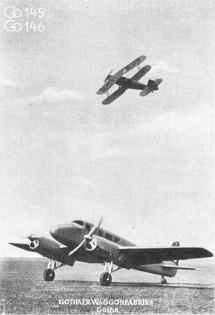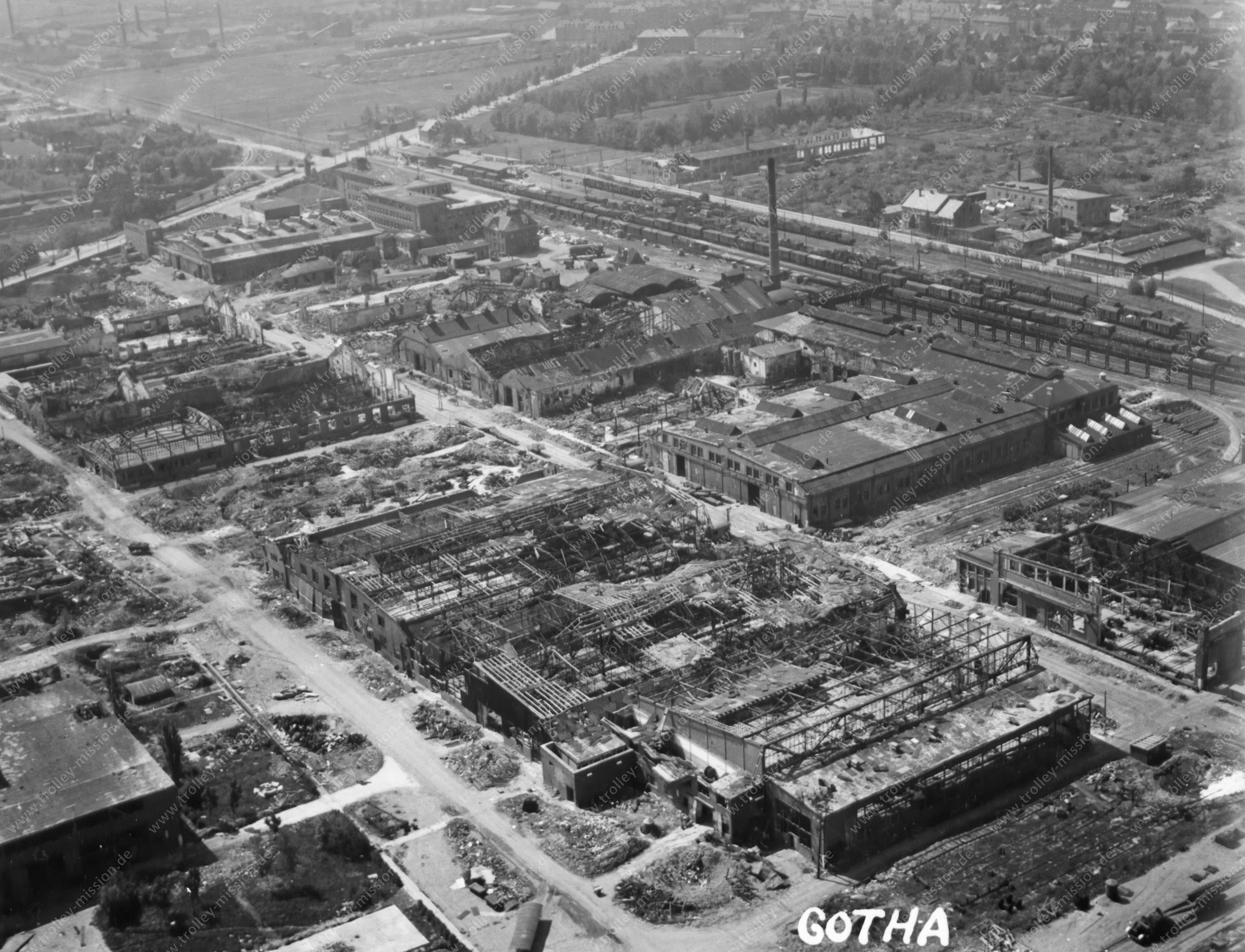
In World War I, Gotha was the manufacturer of a highly successful series of bombers based on a 1914 design by Oskar Ursinus, but heavily reimagined by Hans Burkhard. From 1917, the Burkhard-designed twin pusher biplane bomber aircraft were capable of carrying out strategic bombing missions over England, the first heavier-than-air aircraft used in this role. Several dozen of these bombers were built in a number of subtypes - the Ursinus-based Gotha G.I, and the succeeding Burkhard-designed G.II, G.III, G.IV, and G.V. This last variant was the most prolific, with thirty-six in squadron service at one point.
Whilst Germany was prohibited from military aircraft manufacture by the Treaty of Versailles, Gotha returned to its railway endeavours, but returned to aviation with the rise of the Nazi government and the abandonment of the Treaty's restrictions.
Gotha's main contribution to the new Luftwaffe was the Gotha Go 145 trainer, of which 1,182 were built. The firm also produced the Gotha Go 242 assault glider and licence-built Messerschmitt Bf 110. Perhaps the most famous Gotha product of World War II, however, was an aircraft that never entered service, the Horten Ho 229. This was an exotic jet-powered, flying wing fighter aircraft designed by the Horten brothers, who lacked the facilities to mass-produce it. Two prototypes flew, the second (powered) version lost in an accident on its third flight. The third prototype- built to a modified design - was almost complete and four more were in various stages of manufacture before the end of the war. The Ho 229 V3 ended up in American hands, and is currently at the NASM's Udvar-Hazy Center, under evaluation for restoration.
On 22 February 1944, a squadron of American bombers was sent from Britain to bomb the factory, but due to bad weather, the mission was cancelled before they reached Gotha. On the way back, the Dutch border city of Nijmegen was bombed instead as a 'target of opportunity', killing hundreds of civilians.
On 24 February 1944, 239 American B-24s are dispatched to the primary target at Gotha, Germany (169 bomb Gotha); the lead bombardier from 2AD suffered from anoxia due to a faulty oxygen mask and mistook Eisenach as the primary target, 43 other B-24s released on his mistake (44 bomb Eisenach); they claim 50-10-20 Luftwaffe aircraft; 34 B-24s are lost and 29 are damaged; casualties are: 3 KIA, 6 WIA and 324 MIA.





